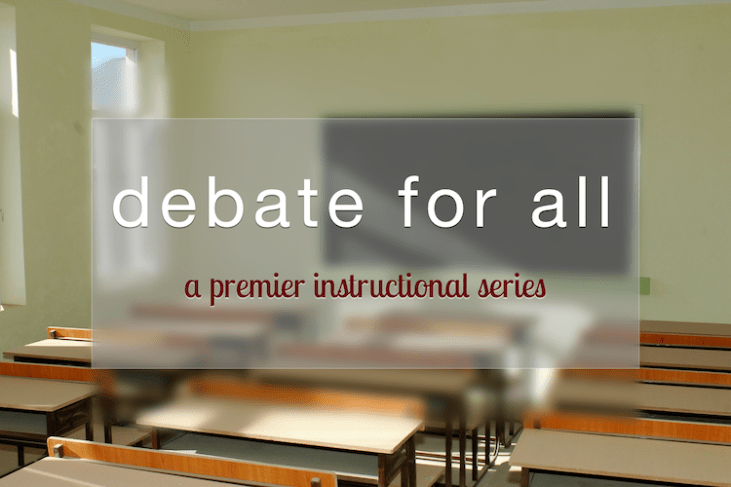Drill of the Week – Debating Non-T Affs

Instructions
For this drill, we are responding to Stuyvesant KF’s Feminist Killjoy aff from last year. Download the file from circuitdebater here. Take time to read the aff; make sure you have a good grasp of it before you start the drill.
Step 1: Take 15 minutes to compile the 1NC against the aff. This should simulate the process of pre-round prep. The 1NC should contain at least 2 viable 2NR options (e.g. T and a Cap K) and case answers.
Step 2: Compile (or have a teammate compile) the 1AR from the blocks in the aff file. If there are no 1AR blocks for your non-topicality option, try your best to estimate what a 1AR would look like against the position based on the file. Flow the responses.
Step 3: Take up to 3:00 of prep and decide which position to go for. Against a non-T aff, you generally want depth in the 2NR, so collapse to one of your options with any necessary case answers.
Step 4: Try Step 3 again, going for your other position. So if you chose to go for T the first time around, try going for the Cap K (or whatever other off case you put in).
Points of Emphasis
- framing/comparison: the 2NR should give a thorough explanation as to why T is a prior question to the aff. These debates are often lost either when the 2nr makes key technical concessions (see “clearing out the underview” below) or when it fails to win the sequencing question of T vs. the K. Some stock arguments that should be read include (but definitely not limited to): topical version of the aff, switch side debate is good, procedural fairness outweighs.
- practicing both 2NRs: Most K debaters have extensive blocks to T nowadays, so having more than one viable threat for the 2NR is incredibly useful! It will also improve your comfort and skill level in more than one area of debate. And if your opponent knows your second option is a credible threat, they’ll spend less time on T, making it a better option.
- debating case: One of the fundamental mistakes people make answering K affs is to not answer the substance of any of the case. This ends up giving the 1ar way too much leverage. For starters, you can usually pull your common K answers to read on case (state good, progress possible, etc.) but you should articulate specific links to the aff and answer their role of the ballot and other framing. Given more time, you should take some time to research the specific literature base of the aff for specific links.
Extensions and Variations:
- clearing out the underview: read (or have a teammate read) the theory underview from the file. Take 2:00 prep time to write down responses. Then set a timer for 1:30 and try to answer every argument. Once you’re done, re-give the drill until you can do it in under :60.
- updating your T shell: Improve your standard T shell against non-topical affs. Now that you know what one of the best non-topical aff debaters will say, throw in some pre-emptive arguments. The indicts to fairness are fairly predictable and can be pre-empted, which is a better use of 1NC time than the standard fairness voter. Vary the impacts of your T shell to include arguments about critical engagement through stasis points. Include a few areas where you intend to tailor the T shell to the specific aff, e.g. topical version of the aff, how your education can solve the aff impacts, etc.
- debate as the aff: Try giving a 2AR against the 2NR you just delivered. Take additional prep time to familiarize yourself with the aff and the 1AR strategy. Then examine the 2NR and any strategic or technical mistakes it might have made. The 2AR ideally should focus on the framing of the K against T.
Questions about this drill and debating non-topical affs? Comment below!
We are now accepting submissions for instructional drill posts. If you have a basic or advanced drill you’d like to be featured or you want to write/edit for Premier Debate, please contact us!



